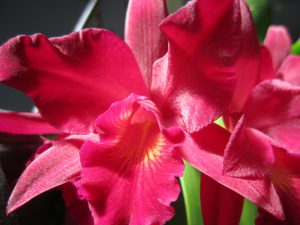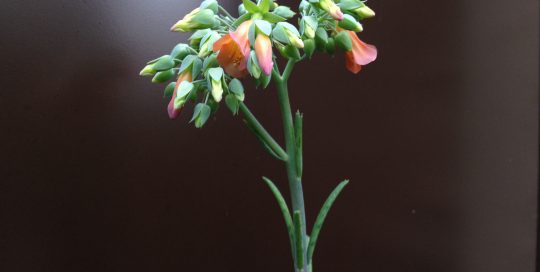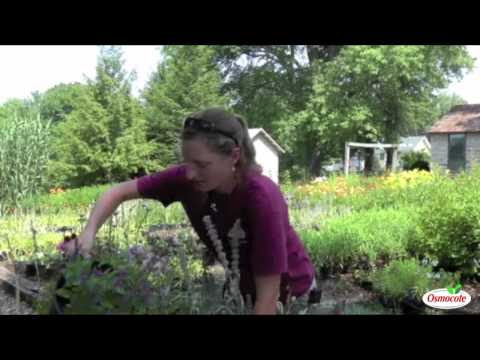Potted Plants for Valentine’s Day
Views: 4537

Valentine’s Day is just around the corner, and instead of flowers that will only last a week, why not give a potted plant that will last for years?
There are plenty of commonly available plants with heart-shaped leaves out there, such as certain Philodendron species. These easy-to-grow houseplants can thrive in low-light conditions with minimal care. Also, strawberry plants and Rex Begonias would make great Valentine’s Day gifts. Basically, in my opinion, any houseplant would make a fine present for Valentine’s Day, but then again I am a plant nerd.
Here are a few other ideas:
Kalanchoe for Valentine’s Day
Kalanchoe are fleshy, succulent plants that you can find year-round in the floral department of most grocery stores. They bloom in red, pink, orange, white, and yellow. Kalanchoe are low-maintenance plants, requiring only a sunny windowsill and occasional water when the soil dries out.
Anthuriums
Anthuriums also bloom in red, white, and pink and are often available in floral departments. They have heart or arrow-shaped leaves and waxy blooms, which appear any time of year given the right conditions. Anthurium need indirect light, warm temperatures, and high humidity to thrive, but will tolerate less than ideal conditions with relative ease.
Orchids for Valentine’s Day
Orchids are, by many people’s standards, the ultimate plant for beautiful blooms. They have long-lasting flowers and, with the proper conditions, will live and bloom for years and years. There are thousands of Orchid species, obviously too many to go into detail here, but most of the readily available ones are fairly easy to grow, despite popular belief.
Most commonly available is the Moth Orchid, or Phalaenopsis. These are the kind you see in grocery stores with a few strappy leaves at the base and several large blooms held atop a single long stem tied to a stake with little clips. These simply require bright light and consistent moisture to thrive. If yours fails to rebloom at least once a year, try placing it in a location where it can receive cooler nighttime temperatures, in the 60 degree Fahrenheit range, with 70 to 80 degree temperatures during the day.
Caladiums
Caladiums are also often available in floral departments and have showy variegated heart-shaped leaves in red, white, and pink tones, which are the star of the show rather than blooms. Although available to buy year-round, Caladiums naturally go dormant in the fall, but can be stored and regrown in early spring after a few months of dormancy. Just reduce water in fall and then stop watering altogether when the foliage dies back. Place the dormant plant in a cool dark area for a few months and then bring it back in the spring by moving it to a bright, warm area and keeping the soil moist, but not soggy. New growth should appear within a couple weeks.
Happy Valentine’s Day!
Meet Abbi Hayes
Abbi's Recent Posts

Kalanchoe delagoensis: Mother of Millions







